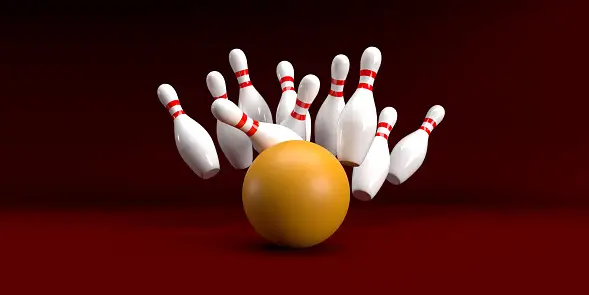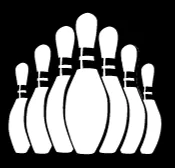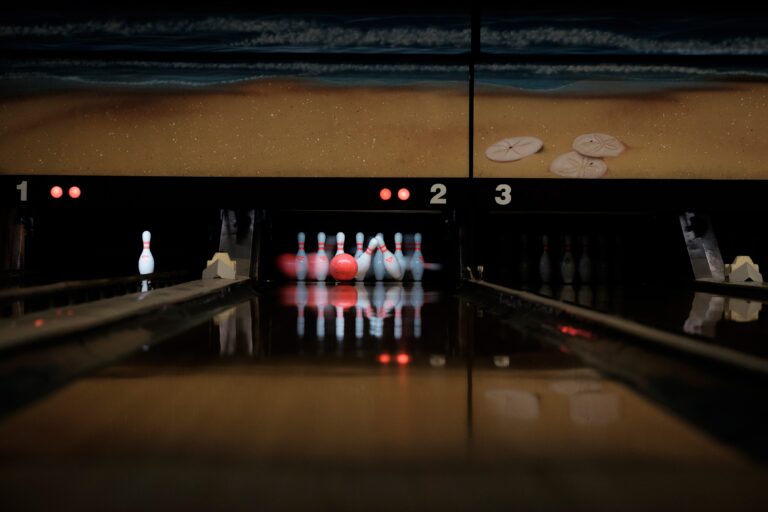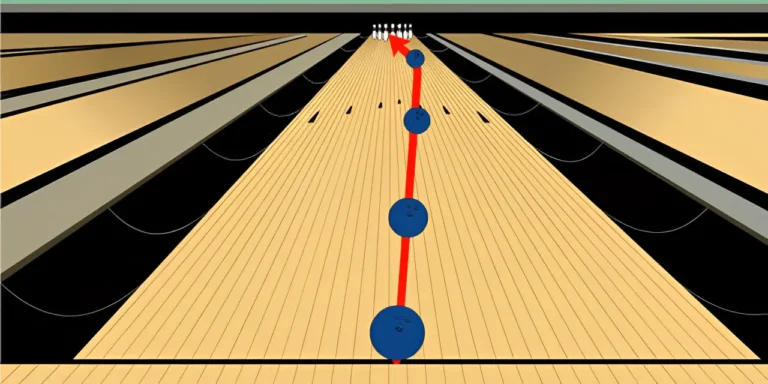How Many Pins Are Used in Bowling? A Clear Explanation
Bowling is a beloved pastime that has captivated people for centuries. However, one question that often arises among newcomers and even seasoned bowlers is: How many pins are used in bowling? In this comprehensive guide, we will unveil the mysteries surrounding bowling pin configurations, shedding light on the standard number of pins used and exploring variations across different bowling styles.
Additionally, we will delve into the historical origins of these setups and provide valuable bowling tips for beginners to help you master the art of knocking down pins like a pro. Whether you’re a novice bowler or an experienced player seeking to refine your skills, this guide will equip you with the knowledge and strategies to conquer any pin configuration with confidence as you learn how many pins are used in bowling.

Ten-Pin Configuration in bowling:
When most people envision a bowling alley, they picture a triangular formation of ten pins neatly arranged at the end of the lane. Indeed, this ten-pin setup is the most widely recognized and utilized configuration in modern bowling. The pins are positioned in a specific pattern, with the headpin (also known as the 1 pin) standing at the front, followed by a triangular arrangement of the remaining pins. Consequently, this configuration presents a strategic challenge for bowlers to hit the “pocket” – the area between the 1-pin and the adjacent pins (3-pin or 2-pin) – to achieve a strike and maximize their score.
Origins and Evolution of the Ten-Pin Setup:
The origins of the ten-pin configuration can be traced back to ancient civilizations, where versions of bowling-like games were played with various objects serving as pins. However, it was not until the early 20th century that the standardized ten-pin format we know today emerged. Furthermore, in the United States, the American Bowling Congress (ABC) officially adopted the ten-pin configuration in 1895, cementing its status as the prevalent format for competitive and recreational bowling alike.
Alternative Pin Configurations:
While the ten-pin setup is undoubtedly the most popular, it’s not the only pin configuration in bowling. Several variations exist, each with its unique set of rules and challenges:
- Five-Pin Bowling: Primarily popular in Canada, five-pin bowling utilizes, as the name implies, five pins arranged in a cross formation. This setup requires a different strategy, as knocking down all five pins constitutes a strike.
- Candlepin Bowling: In New England, candlepin bowling features a triangular arrangement of ten tall, cylindrical pins. The balls used in this variation are smaller and without finger holes, adding an extra layer of difficulty.
- Duckpin Bowling: Like candlepin bowling, duckpin bowling uses smaller, squatter pins and a smaller ball. The pins are arranged in a triangular formation, but with a distinct lean toward the bowler, creating a unique challenge.
Tips for Mastering Pin Configurations:
Regardless of the pin configuration, several strategies can help you improve your game and consistently knock down those pins:
- Aim for the Pocket: In ten-pin bowling, targeting the pocket – the space between the 1 pin and the adjacent pins – is crucial for achieving strikes and maximizing your score.
- Adjust Your Approach: Different pin setups may require adjustments to your approach, release, and ball trajectory. Experiment and find the optimal technique for each configuration.
- Practice Spare Shooting: Mastering spare shooting – knocking down the remaining pins after an open frame – is essential for improving your overall score. Identify common spare leave patterns and practice converting them.
- Stay Consistent: Consistency is key in bowling. Develop a consistent approach, release, and follow-through to maintain accuracy and improve your overall performance.
In modern bowling centers, fast machines clear fallen pins and reset the 10 pins after every roll of the ball. In short, automated pinsetters work like this:
First, a sweep removes knocked-over pins from the lane into the pit below. Next, an elevator lifts the remaining standing pins upwards. Then, pins descend onto an arm which neatly resets them into the correct triangle formation. Finally, once reset, the arm retracts to place the pins on the lane accurately. So if any pins are still standing during resetting, they automatically drop into position.
In essence, quick machines retry the pins rapidly after each bowl.
Scoring Issues Around Missing Pins
Scoring relies on how many pins get knocked down. So problems can happen if machines fail to accurately reset all 10 pins. To avoid inaccurate scores:
In summary, closely following pinsetting rules maintains fair scoring.

Frequently Asked Questions About Bowling Pins
In Summary
To conclude, standardized 10-pin bowling has cemented 10 pins in a triangle as vital to its global popularity and fairness. Precise specifications govern all aspects of regulation pins. While regional variations exist, the 10-pin format remains the standard form of bowling played worldwide.






